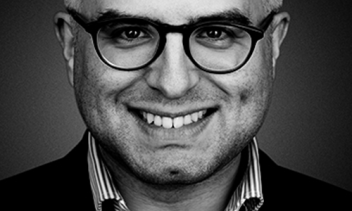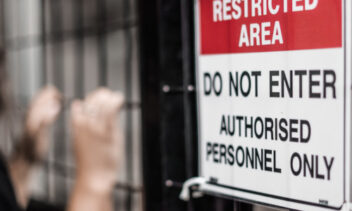
Picture a frustrated writer sitting at a desk. In the wastebasket next to the simple writing desk, there are scraps and scarps (now a word) of paper, remnants of failed drafts and first attempts littered throughout the room. But the writer still works, covering yet another piece of paper with fine script, thin letters etching their way across the fresh parchment. Or perhaps she writes in pencil on the cloudy surface of a much-erased paper, the earlier attempts showing in the smudges. Yet something is different now – this time is right. This draft will work. This draft works. The book is finished, published, to much acclaim (and occasional controversy). And the writer – at times equally praised, feted, critiqued, loved – we can’t say what the writer feels about the finished product. Perhaps pride mixed with the doubts that any artist likely has about their work.
What do we make of the earlier drafts? What becomes of them? Upon first reflection, they are in and of the past, relegated to what could have been, forgotten with the rest of the unfinished degrees and incomplete relationships of our lives. We realize upon further reflection that the earlier drafts are a necessary step to the finished product, setting the path towards the eventual goal. Still in the past, forgotten, but we realize their importance as a stepping stone to the present, like a child’s teeth that fall out to make room for the adult teeth to grow in.
And yet maybe these drafts are something more – not a relic of the past, but a crucial and fundamental part of the fabric of the present. Discarded as they might be, earlier drafts constitute the present, finished work, itself. Perhaps these drafts are not like a child’s teeth but like childhood itself, which we outgrow but never fully abandon or escape. The material explored, worked through, played with, and ultimately included or excluded in the final work trace the shape of the work, marking its outline, constituting the thing itself.
Why the long parable? Consider this Midrash (Kohelet Rabbah 3:11):
אֶת הַכֹּל עָשָׂה יָפֶה בְעִתּוֹ, אָמַר רַבִּי תַּנְחוּמָא בְּעוֹנָתוֹ נִבְרָא הָעוֹלָם, לֹא הָיָה רָאוּי לְהִבָּראוֹת קֹדֶם לָכֵן, אֶלָּא לִשְׁעָתוֹ נִבְרָא, שֶׁנֶּאֱמַר: אֶת הַכֹּל עָשָׂה יָפֶה בְעִתּוֹ. אָמַר רַבִּי אַבָּהוּ מִכָּאן שֶׁהָיָה הַקָּדוֹשׁ בָּרוּךְ הוּא בּוֹנֶה עוֹלָמוֹת וּמַחֲרִיבָן, בּוֹרֵא עוֹלָמוֹת וּמַחֲרִיבָן, עַד שֶׁבָּרָא אֶת אֵלּוּ וְאָמַר דֵּין הַנְיָין לִי, יָתְהוֹן לָא הַנְיָין לִי.
All is made properly in its time. Rabbi Tanchuma says that the world was created in its season; It wasn’t right for the world to be created before then, until it was the right time, as it is said “all is made properly in its time.” Rabbi Abahu said: From here we learn that the Holy One built worlds and destroyed them, built worlds and destroyed them, until creating this one and saying “this one pleases me, those did not please me.”
Like a writer, trying again and again until the right moment for the drafts to work, the Midrash portrays God before creation as building and destroying, building and destroying, until the right moment. What do we make of these previous worlds? Are they lost forever, an early abandoned multiverse gone to the abyss of the primordial wastebasket? Or can we imagine them as constituting our world itself, like passages from early drafts that figure into the finished work? Perhaps, like a book, our world is made up of the inclusions as well as the exclusions, all the material making our little world what it is.
This brings us to censorship, however obliquely. Sometimes it is easy to read censorship only as the story of what didn’t make it into the story, but we see censorship differently: as the story of how what didn’t make it into the story itself creates the story. It is the process of inclusion and exclusion, the motivations and marks of uneasy writing that create the worlds that we live in.
Within the religious camp, the battles between the Chassidim and Misnagdim are replete with deeply rooted disagreement, with censorship occurring at times to develop meaningful narratives across battle lines.
This is not a defense of censorship, but a full-hearted acknowledgement that we are comprised – as people, families, and nations – by the stories we do and don’t tell. This is the story of the stories we don’t tell – from the beginning until today. At different points in the story the character of censorship changes, but as our society shifts to increased interest in the voices from the margins, we can appreciate how the unseen and unheard shaped and shifted around the discourses of history. This is censorship – the story of the stories we don’t tell.
Biblical Era: Humble Beginnings
The Torah, as one of the most hotly contested works of all time, has long been the hub of intense debate around the question of censorship. The Torah shocks, comforts, and disturbs. Dealing with the parts of the text that make us uncomfortable or unwilling to submit has been a task of biblical commentators in one way or another since the very beginning. The most crucially debated works have often been those that lay claim to parts of the Torah, as interpretations about the biblical meanings have divided schools, nations, and countries. Like all the best things in life, it all starts here – in the Torah.
Talmudic Era: Who Is Included in the Conversation?
In the Talmud, censorship gets more interesting. As a major compendium of Jewish thought and law, the Talmud has become a hot spot for censorship battles for hundreds of years. On one level, the Talmud discusses the questions of the limits of acceptable ideas. In one instance, the rabbis of the Talmud discuss the ‘outside books,’ or seforim chitsonim, apocryphal works that didn’t make it into the biblical canon, and so remained eternally outside of the primary discourse.
In another instance (check out Chagigah 15b for the full story), the sages discussed engaging with the thought, work, and persona of a person of troubling or problematic beliefs, centering around Elisha b. Avuyah. Known as Acher (literally: the Other), Elisha was a scholar turned sinner, a brilliant sage who rejected religious life. His student R. Meir still studied from Elisha, leading the Talmud to wonder: “How did R. Meir learn Torah from his mouth?,” in what becomes a fascinating discussion on the parameters of intellectual engagement (only learn from the sacred meets Rabbi Meir ate the seed and discarded the rind in epic battle). At one point in the narrative, the discussion turns to who God quotes, a question of divine censorship if we ever saw it!
All in all, the Talmud’s challenge is not quite with censorship as much as it is about who or what deserves mention, less the intentional discarding as much as the question of intentional engagement. In later generations, the Talmud will become a focal point of intense censorship, as Church and government censors will come to see the Talmud as a chief source of anti-Christian opinion and subversive Jewish beliefs.
Medieval Era: Cen sorship Within and Without
sorship Within and Without
Here is where the censorship fun really picks up, as the Church starts to flex its power against problematic-seeming Jewish writing. It is after the Barcelona disputation in 1263 that the Jews are ordered to eliminate disagreeable content from their books, under the threat of heavy fines. The tragic burning of the Talmud in France occured in 1242, after the disputation of Paris.
Later, the 1559 Index Librorum Prohibitorum (a mouthful to look at but strangely satisfying to say out loud, try it), the list of prohibited works issued by Paul IV, lists the Talmud. 30 years later Sixtus V goes further, broadening the scope of prohibited reading to include “Books of the Jews,” regarding any books that might be negative about the Church. The establishment of the Index expurgatorius (words profoundly enjoyable to mutter angrily as you pass a stranger on the street) of Jewish books in 1595 led to official censors being appointed to delete or alter problematic passages. These censors were often apostate Jews who were liberal with their pen, blacking out words, sentences, and entire passages at times.
In an interesting turn of events, we also see the unfortunate rise of intra-Jewish censorship in this era, as wars over rationalism and mysticism in Jewish philosophy led to intense conflict over the acceptability of certain beliefs, with Maimonides’s writings receiving a fair share of censure in particular. As acceptability is no longer easy, we see the concurrent rise of approbations, or haskamot, at this time, introductions to Jewish books bearing the approval of other rabbis. The first haskamah appears in a book by Jacob Landau titled the Agur, in the 15th century. The haskamah becomes an important tool for Jewish self-censorship. A set of rabbinic conferences (or here’s a new word for you: synod) starting in the 16th century rule that all Jewish books require a haskamah, an increasingly crucial position as fears of Sabbatean influence grow. The excommunication of the Dutch philosopher Baruch Spinoza in the 17th century sets the stage for the ideological battles around disagreement and censorship that will become increasingly commonplace in coming years.
Modern Era: The Changing Face of Censorship
As religious society opens up and the traditional centers of power are challenged by the Enlightenment, the face of censorship slowly changes as well. Whereas in earlier years we saw plentiful censorship occurring for the eyes of Church censors, the somewhat more tolerant governments of the Modern Era mean that censorship is in this era highly self-conscious and self-focused. There is still governmental censorship (particularly in Poland and Prague), but the ideological battles of this time lead to a full-scale increase in the intra-Jewish censorship.
When developing a religious worldview for a community, particularly when forging a reactionary one, isolating evidence of previous sages subscribing to a similar set of beliefs is increasingly important. On the flip side, erasing evidence that earlier sages may have felt differently becomes increasingly taboo, whether that is excising problematic views from the writings of earlier biblical commentators or about Zionism from more modern rabbinic thinkers.
It is In times of ideological crisis, objective truth is often the first victim, and this was the case at this point in history. Religious Jews, now nervous about the influence of maskilim (literally: the enlightened ones), and later of the growing popularity of the Reform movement, are censorship oriented. Haskalah-aligned people are nervous about the less comfortable parts of Jewish literature, and self-censorship abounds, particularly in issues regarding relations between Jews and non-Jews. Within the religious camp, the battles between the Chassidim and Misnagdim are replete with deeply rooted disagreement, with censorship occurring at times to develop meaningful narratives across battle lines. Censorship is a tool used to smoothen over the quirks and knots in the weave of the ideological fabric – when an earlier thinker or sage has a more diverse set of beliefs than is in vogue in the current moment, censorship allows for a more linear or clean truth (think: Maimonides or Ibn Ezra, both of whom had their beliefs censored). Is this a problem? You decide – history, and truth, are a lot more complicated than any of us tend to appreciate.
Contemporary Era: Cancellation, Canonization, Culture
In the aftermath of the public censorship of the Holocaust, the Soviet Union, and the McCarthy hearings, society today is far more wary of censorship than ever before. For much of history, history itself was determined and understood for its narrative or meaning-content as much if not more than for its fact-reporting objectivity. History as we know it is itself a relatively modern novelty, in the sense of caring about the past on its own terms, not for the meaning we draw from it. In light of our new understanding of history, and of truth more broadly, our interest in censorship has grown exponentially. Additionally, the political import and punditical (as in: pundit) weight given to the term ‘cancel culture’ in all of its many manifestations and angles have placed a renewed focus on censorship in Jewish texts and cultures. In the Orthodox world, controversy around books like The Making of a Godol, My Uncle the Netziv, and the books of Rabbi Natan Slifkin, and the increasingly high profile of Orthodox media publications raises questions about the limits of limits.
This renewed focus meets another value of increasing import in the Contemporary Era: the focus on marginalized voices, the voices of those outside traditional narratives. As such, censorship is no longer just a question of who is in and who is out, or what is out, but also of what the very experience of being in and out might suggest about their position. Where does that leave us? No more or less comfortable with the censorship, or non-censorship, of that which makes us uncomfortable than ever before, albeit now with a whole new self-awareness about our instincts about censorship. Will that help? Perhaps, perhaps not. But as we continue to appreciate the voices from the margins, we might yet understand how the stories we do tell and the stories we don’t tell all come together to form one story: the one that tells us.








